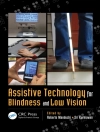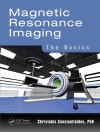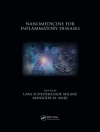Focused specifically on the APRN role in implementing evidence-based practice in the clinical environment
The fourth edition of this award-winning text—written specifically for Advanced Practice Registered Nurses (APRN) and students devoted to scholarly investigation—describes essential ways to implement Evidence-Based Practice (EBP) and quality improvement skills into practical application. Step-by-step instructions walk the reader through the process of finding relevant evidence, appraising it, translating it into practice to improve patient care and outcomes, and disseminating it. This text delivers expert guidance on designing questionnaires and data-collection forms, and on analyzing qualitative and quantitative data. The authors also offer guidelines for evaluating research articles and a variety of EBP activities and protocols demonstrating how to integrate EBP into multiple clinical settings relevant to all APRN practice domains.
New to the Fourth Edition:
- New chapter on Continuous Quality Improvement (CQI) includes information on models, processes, and tools
- New chapter filled with examples of APRN-led initiatives showcasing improved processes and health outcomes resulting from EBP and quality improvement (QI) projects
- Expanded literature reviews including integrative and other types of literature reviews beyond systematic review
- Increased focus on Doctor of Nursing (DNP) competencies and QI
Key Features:
- Helpful in achieving hospital Magnet® status
- Integrates EBP concepts related to patient care
- Examples highlight application of evidence into practice
- Describes strategies for establishing and sustaining an organizational evidence-based practice
- Discusses issues of costs and ethics from EBP perspective
- Purchase includes digital access for use on most mobile devices or computers
Jadual kandungan
I. EVIDENCE-BASED PRACTICE
1. Overview of Evidence-Based Practice
2. Searching for Evidence
3. Research and the Mandate for Evidence-Based Practice
Quality, and Patient Safety&emsp
4. Continuous Quality Improvement
5. Establishing and Sustaining an Evidence-Based Practice Environment
II. BUILDING BLOCKS FOR EVIDENCE
6. Critical Appraisal of Evidence
7. Identifying a Focus of Practice Inquiry
8. Conceptual and Theoretical Frameworks
9. Quantitative Designs for Practice Scholarship
10. Qualitative Approaches for Practice Scholarship
11. Sampling Methods
12. Designing Questionnaires and Data Collection Forms
13. Physiological and Psychological Data Collection Methods
III. USING AVAILABLE EVIDENCE
14. Literature Reviews
15. Program Planning and Evaluation
16. Implementing Evidence-Based Practice
IV. EVALUATING THE IMPACT OF EVIDENCE-BASED PRACTICE, ETHICAL ASPECTS OF A STUDY, AND COMMUNICATING RESULTS
17. Cost as a Dimension of Evidence-Based Practice
18. Evaluation of Outcomes
19. Ethical Aspects of Practice Scholarship
20. Communicating Practice Scholarship Through Oral Presentation
21. Reporting Results Through Publications
22. Exemplars of APRN-led Initiatives
Mengenai Pengarang
Susan W. Buchholz, Ph D, RN, FAANP, FAAN, is a Professor, Associate Dean for Research, Director – Ph D Program at Michigan State University, College of Nursing.












